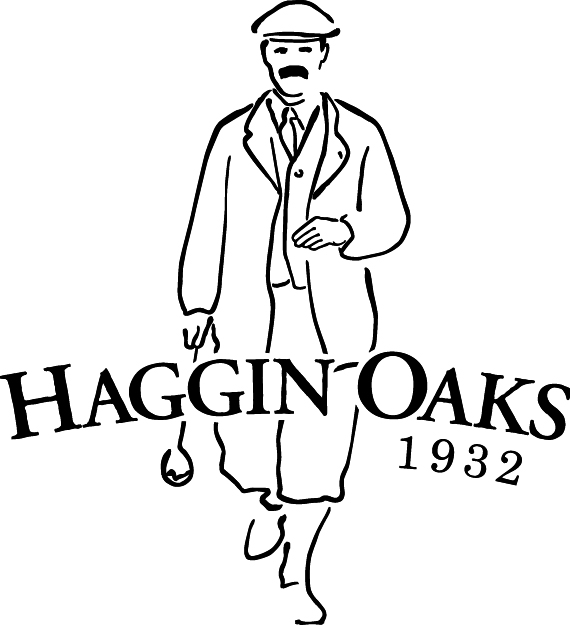Peter Stathos did not stop playing golf after being diagnosed with macular degeneration five years ago. Stathos, at one time a scratch player in the Sacramento area, continued in the game despite being legally blind.
Thanks to the Swing Club for the Blind, a program that is offered and sponsored by The First Tee of Greater Sacramento, Stathos was able to play golf, with the help and support of volunteers.
“Peter was a great golfer and he wanted to give it a try, even though he didn’t have great vision,” said Jeannie Stathos, Peter’s wife. “He didn’t want to quit. He wanted to keep trying to play.
“In my opinion, people who are great at a sport and then they become disabled, and they’re still out there playing it, that’s a heck of a statement about that person. I think that takes more courage. They’re not hitting it like they used to. But they’re still out there playing.”
Peter and Jeannie Stathos first learned about the Swing Club for the Blind from Society For The Blind, a full-service nonprofit agency based in Sacramento that provides services and programs for people who are blind or have low vision, according to its website, societyfortheblind.org. Society for the Blind serves 27 counties around Northern California.
“They offer a lot of programs and this is one that we heard about,” Jeannie Stathos said. “That’s how we got involved.”
Peter Stathos became one of the players in the program, which has two sessions, one in the spring and the other during the fall, at William Land Golf Course in Sacramento. Peter Stathos was actively involved with the Swing Club for the Blind for over three years, until he passed away a year and a half ago.
“It was a terrific experience for him,” Jeannie Stathos said. “It was fun to be out there and do it.”
Jeannie Stathos is one of the leaders of the Swing Club for the Blind, coordinating the program with Jim Cassie.
“I did it by myself when Peter was alive,” said Jeannie Stathos. “When Peter passed away, I stepped back and Jim took over.
“I started in again. We work together on it. We share the responsibilities of it.”
According to The First Tee of Greater Sacramento, “The origins of the Swing Club for the Blind date back to a woman’s professional charity golf tournament held in 1953 at Bing Maloney Golf Course. The proceeds were donated to United Voluntary Services, a national charitable organization which works with veterans hospitals. However, because there was no veteran’s hospital in Sacramento, the money was deposited in a fund that Helen Lengfeld and Libby Brand later used to create a golf club for blind persons which became known as the Swing Club for the Blind.”
It was Lengfeld who convinced Brand, a member at Del Paso Country Club in Sacramento, to create a golf club for blind persons – thus becoming known as the Swing Club for the Blind, according to a brochure that covers the history of the program.
Brand chaired the group until she passed away in 2005.
Players in the program are accompanied by volunteers, who place the ball on the tee, carry golf clubs, assist the player with their set-up, stance and alignment as they walk the nine-hole course, while also helping provide direction and distance for the hole.
There are three weeks to go in the fall session.
There is a training program for the volunteers. William Land Golf Course is managed by Morton Golf.
“Every player’s needs are a little different,” said Jeannie Stathos. “Each participant has a visual disability. Each volunteer has to kind of really figure out what it is their individual player needs, so they can help them with that.”
Each week, there is a short review lesson in golf fundamentals, followed by nine holes of golf. Play is alternate shot by the player and a volunteer, according to the brochure.
The Swing Club for the Blind began in 1974, playing out of Lindale Golf Course. The program has also played at Foothill Farms Golf Course and Campus Commons Golf Course.
“From its inception, the club has been open to all visually-impaired individuals, who are invited to play regardless of age, sex, race, or previous golf experience,” according to a program brochure. “A fundamental precept of the club has been that the golfing experience is made available at no cost to the players.”
Players in the program take public transportation to get to the golf course, or they have family members or friends take them. Currently, there are eight players in the program, including two from Woodland.
“I don’t think I’ve ever seen a more fun and happier group of people, because everybody enjoys it,” said Jeannie Stathos. “We just have a very good time – do a lot of laughing, a lot of kidding with each other.
The people who help with the program get an awful lot back.”
There is a barbecue luncheon at the end of each season.
“There is camaraderie. We just have a wonderful time. It is just great,” said Angela Manuian-Cronin, one of the volunteers with the program. “Some of them had played golf before they were blind and some of them were born blind. Land Park is a great golf course for them. They’re happy. They enjoy it. They are out in the fresh air.”
The set-up of the nine-hole course is shortened for the players.
“If you watch these people, your heart would just give out to them and you would have tears in your eyes,” said Manuian-Cronin.
Financial support for the program has been provided by contributions from various groups over the years, such as the Del Paso Women’s Golf Group and the Fort Sutter Lions Club, as well as from individuals, including players and volunteers, according to the brochure.
The program has averaged 15-20 players and 25-30 volunteers, according to its brochure.
The Swing Club for the Blind received a grant from the U.S. Golf Association in 1999-2000.
Meanwhile, the California Eagles, a golf program that was founded in 1983 by Dick McShane, a golf professional at the Haggin Oaks Golf Complex in Sacramento, and Lainie Case, a former longtime director, includes those who are blind, according to www.hagginoaks.com.
Marty James is a freelance writer who makes his home in Napa. He retired on June 4, after spending 40 years as a sports writer, sports editor and executive sports editor for the Napa Valley Register, a daily newspaper in Napa County. He is a 1979 graduate of Sacramento State and a member of the California Golf Writers & Broadcasters Association, Associated Press Sports Editors and California Prep Sports Media Association. He was inducted into the CIF Sac-Joaquin Section Hall of Fame in 2016 and the Vintage High School Athletic Hall of Fame in September of this year.

